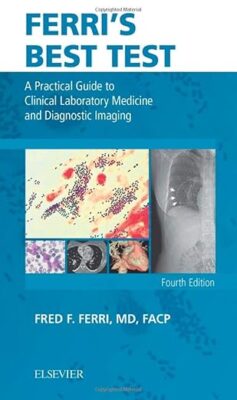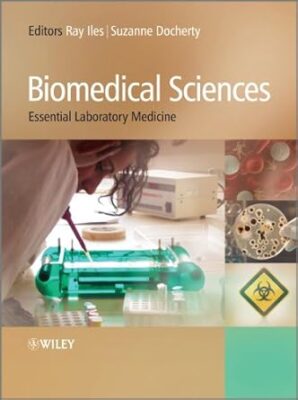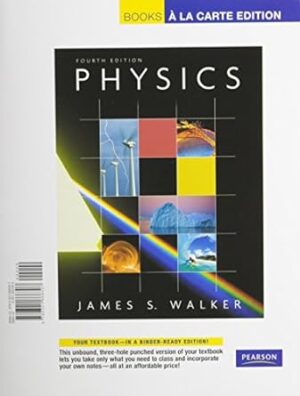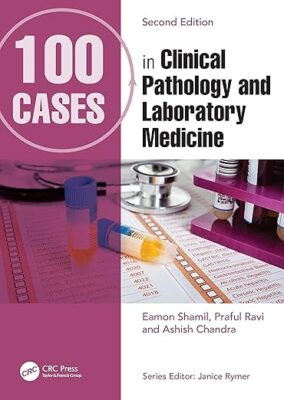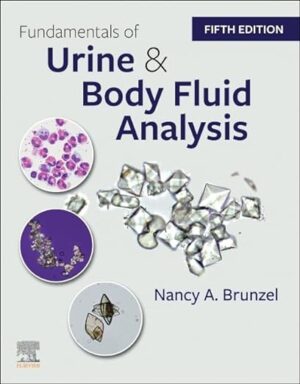Category: Laboratory Medicine
Biomedical Sciences: Essential Laboratory Medicine 1st Edition
Biomedical Sciences is an indispensable, all encompassing core textbook for first/ second year biomedical science students that will support them throughout their undergraduate career. The book includes the key components of the IBMS accredited degree programmes, plus sections on actual practice in UK hospital laboratories (including the compilation of a reflective portfolio).
The book is visually exciting, and written in an interesting and accessible manner while maintaining scientific rigour. Highlighted boxes within the text link the theory to actual clinical laboratory practice for example, the histopathology chapter includes a photographically illustrated flow chart of the progress of a specimen through the histopathology lab, so that students can actually see how the specimen reception/inking/cut-up/cassette/block/section/stain system works, with an emphasis on the safety procedures that ensure specimens are not confused).
The Science of Laboratory Diagnosis 2nd Edition
This fully revised and updated edition of The Science of Laboratory Diagnosis provides a concise description of all common laboratory tests available in medical practice with notes on their application, the accuracy of each test, the historical background to the adoption of various tests and their effectiveness in diagnosis.
- Well illustrated, with clear headings, tables, flow charts and pathology slides, most in full colour
- Provides an accessible reference book in which relevant information can be found easily
- Page design facilitates rapid assimilation of principles and key facts
- All the chapters have been updated and new material has been introduced to cover recently developed techniques, such as fluid-based cytology, telepathology and proteomics
The Science of Laboratory Diagnosis, Second Edition is an essential primary reference source for everyone working in a clinical laboratory. This book is essential reading for pathologists, biomedical scientists, medical laboratory scientific officers and all clinicians involved in laboratory research.
Reviews of the First Edition:
“The text is concise, wide-ranging and easy to digest. The ease of extraction of the important facts make it an ideal source of information for use in a variety of situations from the postgraduate examination to the clinical directors’ board meeting.” BULLETIN OF THE ROYAL COLLEGE OF PATHOLOGISTS
“The editors have done a marvellous job, more than fulfilling their stated aim of producing a volume describing the multidisciplinary state of modern pathology which will be of interest to a wide range of readers. … I was particularly impressed by the many tables and flow charts, which can be used as aids to decision making.” JOURNAL OF CLINICAL PATHOLOGY
“This is an excellent book to dip into and get a feel for techniques used in the other disciplines of pathology.” ANNALS OF CLINICAL BIOCHEMISTRY
100 Cases in Clinical Pathology and Laboratory Medicine 2nd Edition
A 77-year-old man phones ‘999’ after experiencing severe backache. The paramedics arrive to find him in severe pain, and cold and clammy. While at his house, they note that he smokes and also elicit a history of hypertension. He is tachycardic and hypotensive en route to hospital, and intravenous fluids are started. You have been assigned his initial assessment …
100 Cases in Clinical Pathology and Laboratory Medicine presents 100 clinical scenarios commonly seen by medical students and junior doctors in the emergency department, outpatient clinic, operating theatre or in general practice. A succinct summary of the patient’s history, examination and initial investigations is followed by questions on each case, with particular emphasis on the interpretation of the results and in which an understanding of the underlying clinical pathology is central to arriving at the correct diagnosis. The answer includes a detailed discussion on each topic, providing an essential revision aid as well as a practical guide for students and junior doctors, especially those preparing for undergraduate and postgraduate examinations.
Making speedy and appropriate clinical decisions, and choosing the best course of action to take as a result, is one of the most important and challenging parts of training to become a doctor. Fully revised and updated for this second edition, these true-to-life cases will teach students and junior doctors to recognize important clinical conditions, to request the appropriate pathological investigation and correctly interpret those results, and, as a result, to develop their diagnostic and management skills.
Fundamentals of Urine and Body Fluid Analysis 5th Edition
Learn how to accurately analyze urine and body fluids with Fundamentals of Urine and Body Fluid Analysis, 5th Edition. Known for its clear writing style, logical organization, and vivid full-color illustrations, this renowned textoffers the perfect level and depth of information for understanding the fundamental principles of urine and body fluids frequently encountered in the clinical laboratory.This includes the collection and analysis of urine, fecal specimens, vaginal secretions, and other body fluids such as cerebrospinal, synovial, seminal, amniotic, pleural, pericardial, and peritoneal fluids. Author Nancy Brunzel also shares her extensive knowledge and expertise in the field as she highlights key information and walks you through essential techniques and procedures ― showing you how to correlate data with your knowledge of basic anatomy and physiology in order to understand pathologic processes.
- Study questions and case studies in each chapter reinforce comprehension and application, with an answer key located in the back of the book.
- UNIQUE! Table of crystal images based on shape serves as a single, comprehensive guide to the identification of crystals in urine sediment.
- UNIQUE! Image Gallery of Urine Sedimentprovides alternate views of sediment components to augment the numerous classic photomicrographs already present in the Microscopic Examination of Urine chapter.
- UNIQUE! Quick Guides to urine and body fluid photomicrographs make it fast and easy to find a photo of a specific cell type or component of interest.
- UNIQUE! Tables with high quality polarizing microscopy photomicrographs demonstrate the differences in birefringent intensity of substances with and without a red compensator.
- The most complete collection of high-quality, full-color images enables optimal identification of microscopic components in urine and other body fluids.
- NEW! Fully updated content provides valuable information on the latest techniques and advances in the field.
- NEW! Enhanced content, new tables, and new images facilitate the microscopic differentiation of monocytes, macrophages, and mesothelial cells in pleural, peritoneal, and pericardial fluids.
- NEW! More than 250 photomicrographs of cells and other components in body fluid and urine sediment serve as a visual quick reference for identification during analysis.
- NEW! Thumbprint images embedded in numerous tables enhance learning and serve as an invaluable resource when performing fluid analysis at the bench.
Graff’s Textbook of Urinalysis and Body Fluids 3rd Edition
Graff’s Textbook of Urinalysis and Body Fluids 3rd Edition
Retaining the wide array of full color photos, illustrations, and photomicrographs that have made Graff’s Textbook of Urinalysis and Body Fluids a time-honored resource for students and laboratory professionals, this updated Third Edition is now even easier to use and easier to teach from. In addition to adding new and expanded content, the authors have reorganized the book into shorter, easier-to-digest chapters, added photos that depict important slides currently seen in practice, and created new online engagement exercises to help students master the material. An expanded array of online resources saves instructors time and help students succeed.
Molecular Diagnostics: Fundamentals, Methods, and Clinical Applications Third Edition
Molecular Diagnostics: Fundamentals, Methods, and Clinical Applications Third Edition
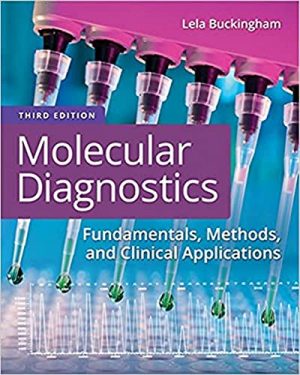
Molecular Diagnostics 3RD EDITION
The only medical book you need to become certified.“Excellent book, full of details and clinical information. In addition, it describes very complexed concepts in a very easy way to understand including comprehensive diagrams.”—Ruben G., Amazon Reviewer MB(ASCP) must read.“This is a must read for those laboratory professionals trying to advance their knowledge in molecular diagnostics especially for those people taking the MB(ASCP) exam. Sure it helped me pass the exam.”—JR, Amazon Reviewer
FOR MORE BOOKS VISIT EDOWNLOADS.ME
Meet the challenges of this rapidly expanding field
Molecular diagnostics continues to grow in importance in the clinical laboratory. This respected text will prepare your students with a grounding in the fundamental principles of molecular biology. current methods, and their clinical applications.
With a focus on the application of molecular concepts to diagnostic purposes, the text explains and illustrate the use and interpretation of molecular-based assays in patient care. Now with an expanded discussion of nucleic acid sequencing, with added emphasis on next generation sequencing (NGS), and updated coverage of proteomics and mass spectrometry applications, your students will have the most current information available today.
DOWNLOAD THIS MEDICAL BOOK
Davis’s Comprehensive Manual of Laboratory and Diagnostic Tests With Nursing Implications 9th Edition
Davis’s Comprehensive Manual of Laboratory and Diagnostic Tests With Nursing Implications 9th Edition
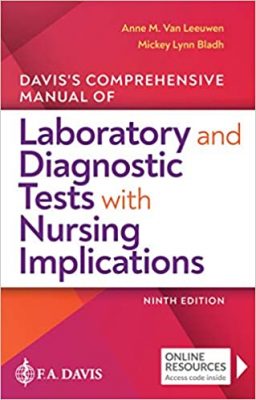
Best money I have spent in a LONG time. “I’m a nursing student and part of our clinical rotation was to write down our patient’s lab results and note on any abnormals why they were abnormal for my particular patient. This book lists out not just the normal levels, but what conditions can contribute to the high or low values. Sometimes it’s pages and pages of possible reasons. This baby is a fantastic time saver for me.“–Online Reviewer
Great for nursing school, you will use it constantly. “Best nursing lab book I’ve encountered. Definitely worth the money.“–Online Reviewer
Accuracy. “Very useful in clinical settings. Easy to read! Love this book!“–Katrina, Online Reviewer
The information nurses need…when, where, and how they need it!
Nursing-focused and easy-to-read, this full-color manual delivers all the information you need to understand how tests work, interpret their results, and provide quality patient care–pre-test, intra-test, and post-test.
Tests and procedures are listed in alphabetical order by their complete name for quick reference. The integrated index allows fast searches by abbreviation, synonym, disease/disorder, specimen type, or test classification.
DOWNLOAD THIS MEDICAL BOOK
Laboratory Medicine The Diagnosis of Disease in Clinical Laboratory 2nd Edition
Laboratory Medicine The Diagnosis of Disease in Clinical Laboratory 2nd Edition

Laboratory Medicine 2nd Edition
Laboratory Medicine is an essential text for medical students and residents studying clinical pathology, medical technology students, and for practitioners working in a clinical setting. By selecting the appropriate tests and interpreting the results correctly, physicians using this book should be able to optimize patient outcomes and reduce the cost of achieving a diagnosis.
FOR MORE MEDICAL BOOKS VISIT EDOWNLOADS.ME
This full-color guide features an easy-to-follow, consistent presentation for each disease discussed. Chapters begin with a brief description of the disorder followed by a discussion that includes tables detailing the laboratory evaluation of specific disorders, and coverage of diagnosis, baseline tests to exclude diagnostic possibilities, and clinical indications thatwarrant further screening and special testing.
Features
- Updated to reflect the most current information
- 46 laboratory methods presented in easy-to-understand illustrations which include information on the expense and complexity of the assays
- More than 200 tables and full-color algorithms encapsulate important information and facilitate understanding
- Full-color blood-smear micrographs demonstrate common abnormal morphologies of red blood cells
- Valuable learning aids in each chapter, including learning objectives, chapter outlines, and a general introduction
- Extensive table of Clinical Laboratory Reference Values showing the conversions between US and SI units for each value
- Coverage of genetic test options that are now commonlyused in clinical practice
DOWNLOAD THIS BOOK
Molecular Cloning: A Laboratory Manual,(3 volume set) 3rd Edition
Molecular Cloning: A Laboratory Manual,(3 volume set) 3rd Edition
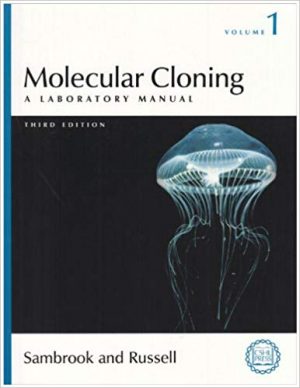
Molecular Cloning: A Laboratory Manual,(3 volume set) 3rd Edition
The first two editions of this manual have been mainstays of molecular biology for nearly twenty years, with an unrivalled reputation for reliability, accuracy, and clarity. In this new edition, authors Joe Sambrook and David Russell have completely updated the book, revising every protocol and adding a mass of new material, to broaden its scope and maintain its unbeatable value for studies in genetics, molecular cell biology, developmental biology, microbiology, neuroscience, and immunology. Handsomely redesigned and presented in new bindings of proven durability, this three-volume work is essential for everyone using todays biomolecular techniques.
FOR MORE BOOKS VISIT EDOWNLOADS.ME
The opening chapters describe essential techniques, some well-established, some new, that are used every day in the best laboratories for isolating, analyzing and cloning DNA molecules, both large and small. These are followed by chapters on cDNA cloning and exon trapping, amplification of DNA, generation and use of nucleic acid probes, mutagenesis, and DNA sequencing. The concluding chapters deal with methods to screen expression libraries, express cloned genes in both prokaryotes and eukaryotic cells, analyze transcripts and proteins, and detect protein-protein interactions. The Appendix is a compendium of reagents, vectors, media, technical suppliers, kits, electronic resources and other essential information. As in earlier editions, this is the only manual that explains how to achieve success in cloning and provides a wealth of information about why techniques work, how they were first developed, and how they have evolved.
DOWNLOAD THIS BOOK

